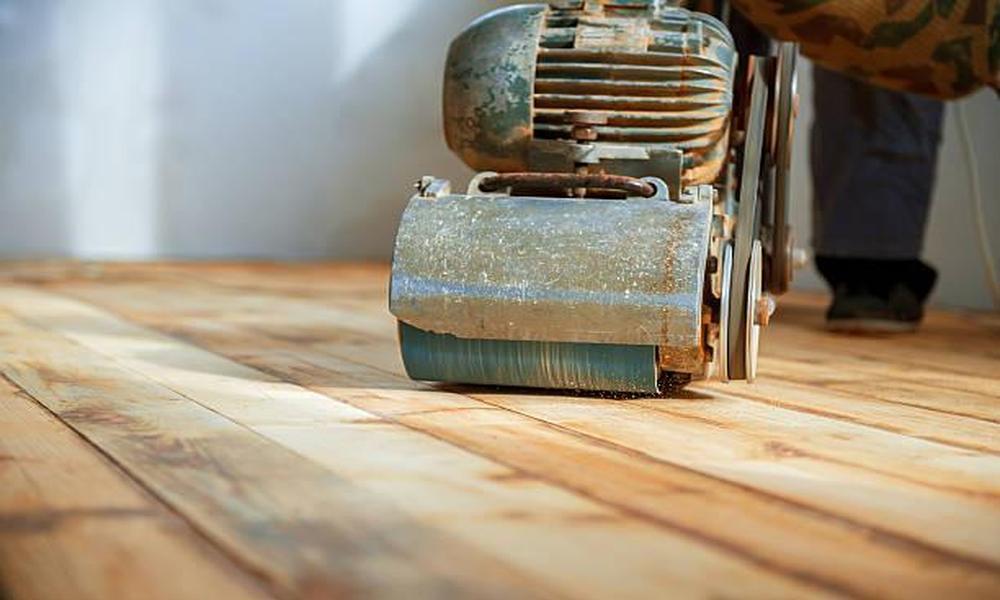Preparing the floor sanding is an important step in achieving a smooth and flawless finish. Here are the steps you should take:
- Remove all furniture and debris from the room: Before you start sanding, it’s important to remove all furniture and other items from the room. This will ensure that you have plenty of space to work and that nothing gets in the way of the sanding process.
- Clean the floor: Once the room is clear, use a broom or vacuum to remove any dust, dirt, or debris from the floor. You can also use a damp mop to clean the floor and remove any stubborn stains or dirt.
- Fill any gaps or holes: If there are any gaps, holes, or cracks in the floor, use a wood filler to fill them in. Make sure the filler is completely dry before sanding.
- Check for nails or staples: Before sanding, check the floor for any nails or staples that may be sticking up. These can damage the sandpaper and make the sanding process less effective. Use pliers or a nail set to push any nails or staples below the surface of the floor.
Types of Floor Sanding Machines
There are several types of floor sanding machines available, each designed for specific types of flooring and sanding applications. Here are some of the most common types of floor sanding machines. Drum sanders: These are the most commonly used floor sanders and are ideal for sanding large areas of hardwood flooring. Drum sanders use a rotating drum covered in sandpaper to remove the top layer of the flooring. Belt sanders are similar to drum sanders, but use a continuous loop of sandpaper instead of a drum. They are great for sanding uneven or warped floors and for removing paint or other coatings.
An orbital sander is a versatile machine that can be used for a variety of sanding tasks, including hardwood.
Tips for a Successful Floor Sanding Project
Before starting your floor sanding project, make sure to prepare the room properly. Remove all furniture, rugs, and other items from the room, and cover any remaining fixtures or surfaces that could be damaged by dust or debris. Choose the right equipment: Make sure to choose the right sanding equipment for the job. If you are sanding a large floor, you may want to consider renting a large floor sander. Start with coarse grit sandpaper: Begin sanding with a coarse grit sandpaper to remove any rough spots, stains or imperfections in the floor.
Always move the sander in the direction of the grain, and avoid leaving the sander in one spot for too long, as this can create an uneven surface. After using the coarse grit sandpaper, gradually work your way through the grits to achieve a smooth finish. Move from coarse to medium grit, then from medium to fine grit. This will help to minimize the amount of dust and create a smoother surface. This will help ensure a smoother finish and prevent dust from getting caught under the sandpaper. After the final sanding, make sure to vacuum or sweep the floor thoroughly, and wipe it down with
 Kindness and Quiet Help Everyone Enjoy the Office Entertainment Site Together
Kindness and Quiet Help Everyone Enjoy the Office Entertainment Site Together  Machine Learning with Excel: A Beginner’s Guide
Machine Learning with Excel: A Beginner’s Guide  Transforming Singapore’s Transport System The Ultimate Convenience of Promenade Peak
Transforming Singapore’s Transport System The Ultimate Convenience of Promenade Peak  Using CAGR Calculator for Business Revenue Forecasts
Using CAGR Calculator for Business Revenue Forecasts  Chencharu Close Condo Mix Development The Ultimate Address for Modern City Living with Exceptional Transport Links and Future-Ready Amenities
Chencharu Close Condo Mix Development The Ultimate Address for Modern City Living with Exceptional Transport Links and Future-Ready Amenities  How to Prevent Aches and Pains from Everyday Activities
How to Prevent Aches and Pains from Everyday Activities  Expanding Horizons Enrichment Centers and Special Education Institutions Near The Sen Condo
Expanding Horizons Enrichment Centers and Special Education Institutions Near The Sen Condo  How Commercial Cleaning Enhances the Environment in Toledo’s Dental Labs
How Commercial Cleaning Enhances the Environment in Toledo’s Dental Labs  Here’s Why a UAE Trade License is the First Step to Business Success
Here’s Why a UAE Trade License is the First Step to Business Success 




